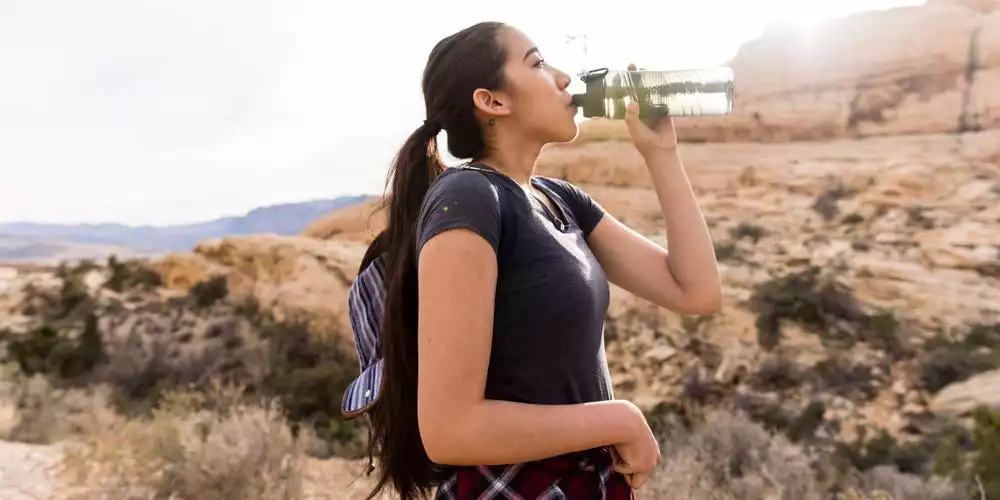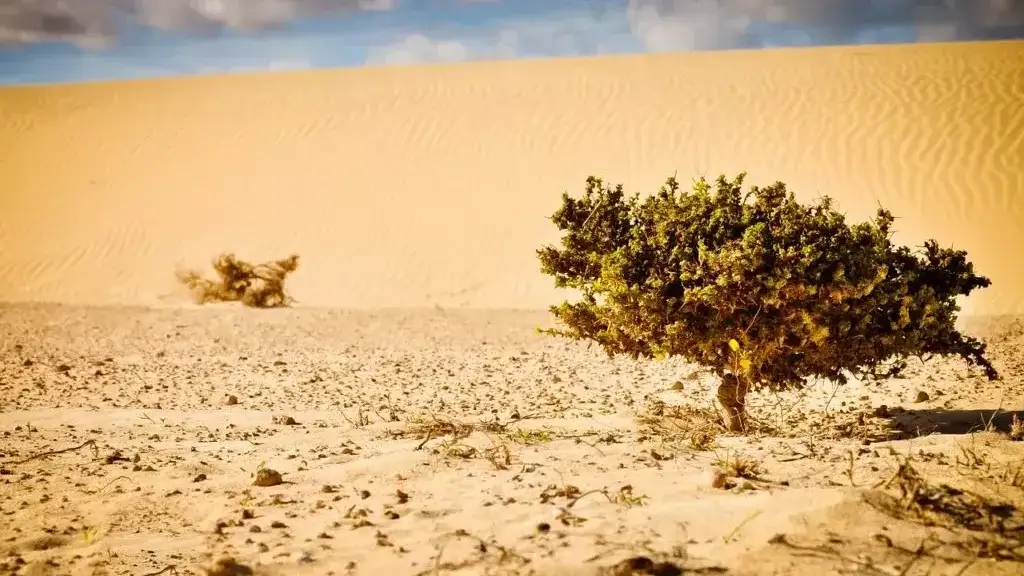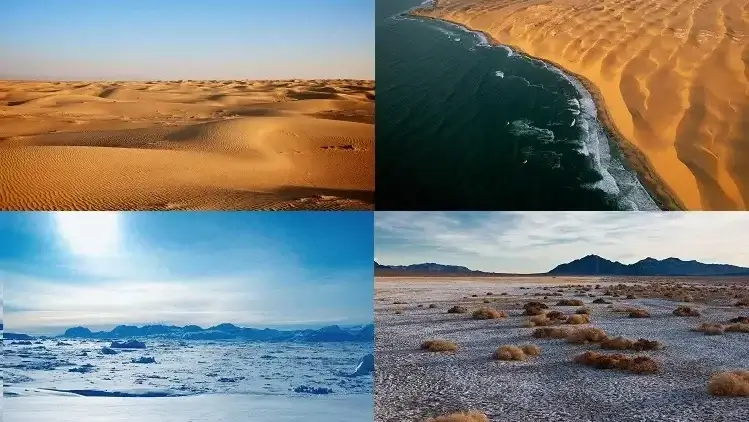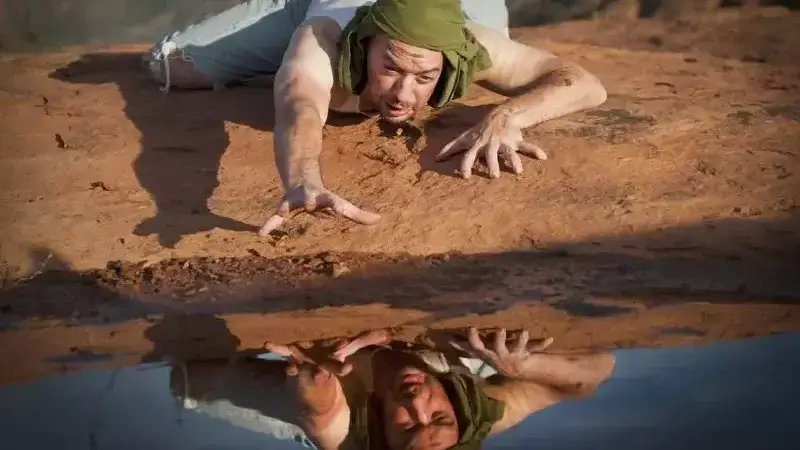How much water do you need to survive in the desert? How long can you last without it? How do you stay hydrated while surviving in the heat? These are questions that many people ask themselves when they think about survival.
In this blog post, we will talk about how much water is needed and what steps should be taken to stay hydrated so that you can survive!
How Long Can You Last in the Desert Without Water?
The amount of time you can survive in the desert without water also greatly depends on the environment you are in. If you’re in a hot, dry climate, dehydration will set in much quicker than if you were in a cooler area with more moisture.

You can last up to three or four days without drinking any water, but this also depends on your specific location. In Death Valley, you might only last a day if you didn’t drink at least one or two liters of water before arriving.
In the desert, water is life. Without it, you will not last long. The average person can only survive three to four days without water in a hot and dry environment like the desert.
If you are stranded in the desert, your best chance of survival is to find shelter from the heat and drink as much water as possible. If you’re in a cooler, more humid climate, you might be able to last up to four days without drinking any water.
It’s important to stay hydrated when traveling in the desert. Drink plenty of fluids before and during your trip, and make sure to carry enough water with you so that you don’t have to rely on finding it in the desert.
How to Finding Water Sources in the Desert?
If you are stranded in a hot, arid desert, finding water is your top priority. Not only do you need to drink enough water to stay hydrated, but also you need to use it to cool yourself down.
When you’re stranded in a desert (or anywhere else, for that matter), the first thing you should do is find shelter. If possible, look for an existing structure to get out of the sun and pray it doesn’t rain.

If there’s no such luck, try digging down into the ground or building your own “igloo” out of whatever materials are available.
Once you’ve got shelter, it’s time to start looking for water. If it’s not raining, the first place to look is underground. Dig a hole in an area that looks most likely to have moist soil and put your hand down into the hole. You might be able to find a small pool of water to drink.
If it’s not raining and you don’t want to dig, consider collecting dew. Tie a piece of clean cloth around your ankles and walk through the grass early in the morning. The cloth will absorb the dew, which you can wring out into a container.
If you have no other options, try to find a cactus or desert plant with moist fruit and roots. Cut into the side of the cactus and drink the liquid inside, or peel back the skin of a fruit like an orange and eat the flesh.
Types of Deserts
There are five main types of deserts. Each one has its own challenges. It can be hard to find enough water in some of them, and the temperature is different in each one. Before I suggest which one is best for your excursion, I’ll go through each kind in detail.

1. Coastal: A coastal desert has a lot of salt water. While you can’t drink ocean water straight away, evaporation or boiling may be used to produce potable water. It will take some effort and time, but you will eventually get a cool glass of water.
2. Subtropical: The Sahara is a subtropical desert, which is barren and sandy. You’ll need to locate a water source in this desolate landscape. Look for birds or indications of green on the horizon. Don’t be fooled by the heat haze, which may appear to be water reflecting off in the distance.
3. Rain Shadow: This type of desert is located near the lee (opposite side facing winds) of mountains. Death Valley, which is located in California, is a great example of this sort of terrain. There are no oases and very little vegetation to be found. I recommend leaving this type of desolation behind you as soon as possible. You might be
4. Interior: On the inside of a continent, hundreds of miles from an ocean, are interior deserts. Both the Gobi and Sonoran deserts are examples of this sort. You may wish to visit the Sonoran desert where you may drink tea from a cactus.
5. Arctic: The tundra of Siberia, for example, is a vast dry, icy plateau that experiences extreme cold. In these deserts, you may discover and melt ice and snow. Place the frozen water in a plastic or metal container between layers of your clothing and leave it there overnight.
Signs of Your Body is Dehydrated in the Desert
Your body is dehydrated when it doesn’t have enough water. You can usually tell that you’re dehydrated by some small signs in your body such as dizziness, headaches, and dry skin.

When not drinking enough water the inside of our bodies don’t work right. If this happens to me I get a headache or feel really tired. Another sign of dehydration is that your skin doesn’t look good, it’s really dry and you can tell if someone looks dehydrated by their eyes because they will be really squinty looking.
When you are in the desert, your body is dehydrated if:
- Feel thirsty
- Mouth is dry
- Skin doesn’t snap back quickly when pinched
- Urine is dark yellow
- Swollen tongue
- Nasty breath (in those who don’t usually have it)
- Dizziness
- Sluggishness and fatigue
- Decreased urine or when you stop sweating in the heat
- Confusion or the inability to focus
- Heart Palpitations
- Fainting spells
- Headaches
- Decreased appetite or desire for food
- Feel lightheaded or exhausted
How Much Water Do You Need To Survive In The Desert?
In order to survive in the desert, you need at least three liters of water per day. Adult men need at least 124 ounces (or around three and a half liters) of water per day, while adult women require 92 ounces (or around two and a half liters).

This is more than an average person needs and it’s especially important for adult men who have a higher volume of bodily sweat that can’t be absorbed by their skin like women do due solely because they’re made differently!
Keep in mind that your activity level will affect how much water you need. If you’re doing a lot of physical activity in the desert, you’ll need more water to stay hydrated.
Remember that sweat is both your friend and your enemy – it cools you down while also leaching out your water and salt. If you’re living in or traveling through a desert, drink around a gallon of water per day to be safe.
This is in addition to whatever else you drink. While that might be more than you need, it’s still a good rule of thumb. Stay safe in the desert – drink plenty of water!
When It Comes to Non-Water Liquids in Extreme Heat?
One of the most common mistakes people make is to rely on caffeinated drinks, sports drinks, or even rehydration drinks. While these will hydrate you, they do not contain enough water and can cause more harm than good.
If your only source of liquid is some sort of coffee or soda, drink it. But if you have access to sports drinks or rehydration drinks, try to filter them through a LifeStraw or similar device so that you are getting mostly water.
If you are in the desert and cannot find any water, your best bet is to walk toward the nearest civilization or mountain. You can collect water on the way, and you will be on your way to safety.
Remember, though, that you need to drink more water than usual if you are doing any strenuous or outdoor activities. Dehydration can be deadly in the desert.
Conclusions
So, if you’re traveling in the desert, be sure to pack plenty of water – at least three liters per day. If you’re doing any strenuous or outdoor activities, drink even more than that.
And remember to stay safe! Dehydration can be deadly in the desert. Drink plenty of water and take precautions to avoid the dangers of dehydration.
FACT: In 1979, an Austrian teenager survived for a record 18 days without food or water after being forgotten in a holding cell by the police.